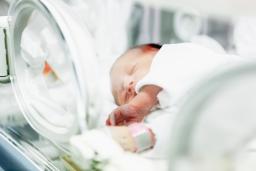Interpreting newborn infants’ EEGs with AI
Keywords:The process of interpreting newborn infants’ electroencephalograms (EEGs) is becoming more accurate and faster. With AI, it is possible to analyse the recovery of infant’s brain from critical conditions, and to visualise it on a patient monitor at neonatal intensive care units.

Interpreting newborn infants’ EEGs with AI
Researchers at the BAby Brain Activity Center (BABA) of HUS New Children’s Hospital and the University of Helsinki have demonstrated that the interpretation of newborn infants’ electroencephalogram (EEG) can be automated so that AI first analyses the data and then displays the result graphically on a patient monitor.
Their research article has recently been published in the prestigious Lancet Digital Health journal and is part of Saeed Montazeri’s doctoral dissertation on AI solutions.
“This is a great leap in development. We can interpret a newborn baby’s EEG automatically without having an expert physician constantly present”, says leader of the project, Professor Sampsa Vanhatalo from HUS.
EEG is used to measure the electrical function of the brain using little sensors placed on the head. An EEG can for example be used to determine how the brain of a newborn infant is recovering from a lack of oxygen at birth, or whether a child is having epileptic seizures. EEG monitoring is important when making care decisions and prognoses of a child’s development.
Each year, Finnish intensive care units have hundreds of infants who need EEG monitoring. They have to be monitored for days or even weeks.
Although there is a decades-long history of monitoring newborn infants with EEG, there are still major challenges in using this technology. Intensive care would require that the attending physician is constantly aware of their little patients’ condition, but physicians who are specialised in interpreting EEGs are not continuously available anywhere in the world. This is why simple graphical tools have been used for interpreting EEG monitoring, but their accuracy has not been good enough.
More accurate, faster and objective interpretation of EEGs
The study was conducted at the BABA Center where AI algorithms were trained to interpret newborn infants’ EEG measurements according to a classification provided by a multinational team of EEG experts. The AI algorithm based on deep learning was designed to describe a child’s EEG activity on a scale of 0–100. Finally, the result was visualised so that it could be displayed on a newborn infant’s monitor at the neonatal intensive care unit (NICU).
The novel AI-based measure of neonatal brain function is called the Brain State of the Newborn, BSN. It is able to closely monitor a child’s recovery from issues such as lack of oxygen during birth and to identify sleep-wake cycles during treatment at the neonatal intensive care unit.
“The new computer-made EEG interpretation method will harmonise measurement and care practices, specify diagnostics and prognoses, as well as support development of new therapies. In addition, infant EEG monitoring will be possible at the NICU even without the constant presence of specialised physicians”, Vanhatalo says.
The new EEG analysis and visualisation method is not yet available for routine clinical use, as all hardware and software changes in medical devices require an independent clinical assessment and subsequent approval by the authorities.
“To help make that happen, we have made the BSN algorithm available to researchers in a cloud service maintained by the BABA Center”, Vanhatalo mentions.
The study was conducted at the BABA Center of HUS New Children’s Hospital and the University of Helsinki. The study also involved the Stella Maris Institute in Italy, Uppsala University in Sweden and the QIMR Berghofer Medical Research Institute in Australia.
Research article
https://www.thelancet.com/journals/landig/article/PIIS2589-7500(22)00196-0/fulltext
Cell Reports Medicine, comment
https://doi.org/10.1016/j.xcrm.2022.100864
More information
Sampsa Vanhatalo
+358 50 307 2439
sampsa.vanhatalo@helsinki.fi